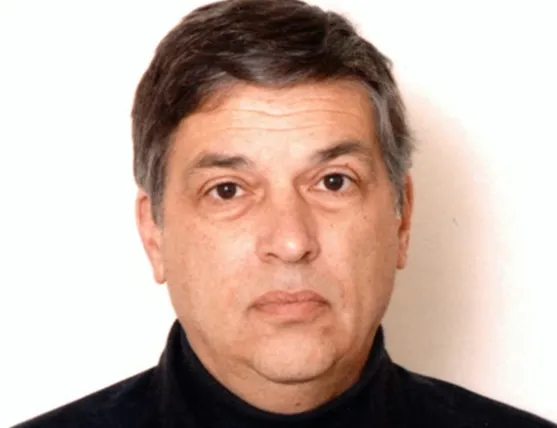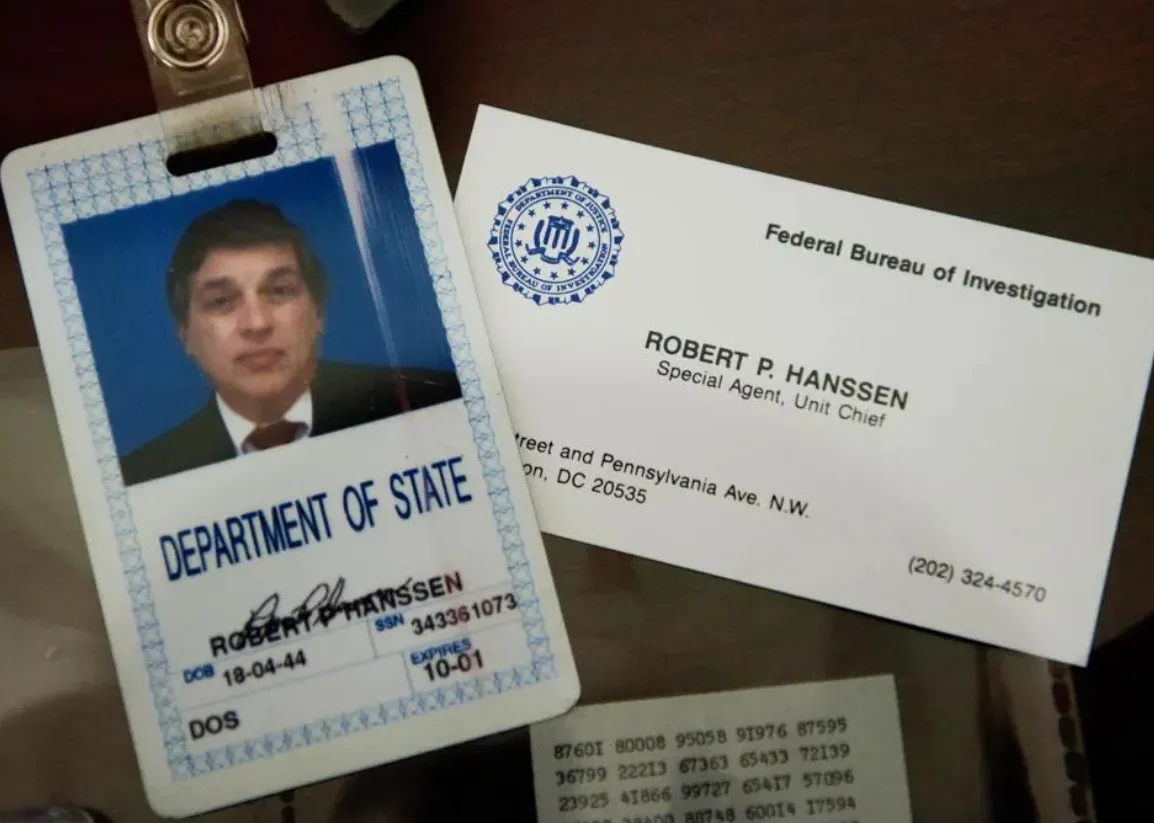The Inside Story: Robert Hanssen’s Psychiatrist Reveals Secrets of the KGB Super Spy
Listen to True Spies podcast: Gray Suit & the Ghost
What motivated deadly traitor Robert Hanssen to spy for Moscow long after he needed the money? SPYSCAPE sat down for an exclusive interview with Hanssen’s psychiatrist, Dr. David Charney, a Washington, D.C. specialist on ‘insider spies’, to find out what made Hanssen tick.
FBI Special Agent Robert Philip Hanssen pocketed $1.4m in cash, diamonds, and Russian bank deposits from Moscow before his arrest in 2001. “What took you so long?” Hanssen asked arrogantly as the FBI pounced during his final KGB dead drop in a Virginia Park.
He pleaded guilty to 15 counts of espionage and conspiracy to avoid the death penalty and was serving multiple life sentences in a Colorado prison when Hanssen was found dead in his cell on June 5, 2023. He was 79 years old and it was the final chapter in one of the most notorious Cold War espionage cases in US history.
Hanssen began spying for the Soviet Union (and later Russia) in the late 70s, three years after joining the FBI when he was assigned to a New York counterintelligence unit. He marched into the New York offices of Amtorg, a front for the Soviet military intelligence agency, and volunteered his services. It was a betrayal that had severe consequences for US national security. Hanssen exposed three KGB agents working for the Americans who were deported and arrested. Two were executed.
The FBI-KGB spy also revealed the existence of a tunnel the Bureau and the National Security Agency constructed beneath the Soviet Embassy in Washington, D.C. but the treachery didn’t end there. Hanssen shared details of US technical operations and gave the Soviets US plans about how America would react to a Soviet nuclear attack.
Much has been written about Hanssen but SPYSCAPE wanted to resolve one question in particular: Why did he betray his country?

'Going Postal': inside the mind of a traitor
Psychiatrist Dr. David Charney spent about 100 hours with Hanssen after his arrest - two hours a week over the course of a year - and believes Hanssen’s betrayal is rooted in his ego, his intolerable sense of personal failure, and the way Hanssen defined the ‘failures’ that began mounting up before Hanssen joined the FBI.
Hanssen’s father was a disparaging Chicago police officer who once humiliated his son by rolling Hanssen into a carpet as a punishment. “He felt belittled and damaged by his father," Dr. Charney said. When Hanssen dropped out of dental school after less than a year, Hanssen considered that a personal failure. When he joined the FBI, Hanssen tried to enact improvements at the Bureau, even introducing colleagues to US Air Force Colonel John Boyd’s OODA Loop - Observe, Orient, Decide, Act - but the FBI wasn’t interested.
Hanssen, confronting what he perceived as failure yet again, decided to fix his problems by ‘Going Postal’ - an unhappy term related to US postal workers who shoot and kill their colleagues. In psychological terms, it refers to the way people deal with negative feelings that might involve their personal as well as professional lives.
”When you want to unload that negative feeling, you go to the places you are familiar with. So hence, the person working at the Post Office will shoot up people at the Post Office," Dr. Charney said. "While somebody working in the Intelligence Community has a ready-made solution, which is, ‘Those bastards at work, I will show them. I will get them if I cross over the line and start working for the KGB. That’ll show them and I will undermine those swell-headed pigs. They think they are so smart? Well, I’m smarter'... It’s that kind of psychology.”
Hanssen thought of himself as James Bond. The FBI thought of him more as a librarian. Was that another trigger?
“Yes, I think so. Because I heard a lot from other people that he was not a guy that fit into the culture of the other Special Agents. He was stiff and morbid looking. Some people called him ‘The Undertaker’. He wore black suits.”

Gray Suit and The Ghost
It wasn't until the arrest of CIA-KGB double agent Aldrich Ames in the mid-'90s that the FBI and the CIA realized there may be another Soviet mole in US intelligence and the hunt began. Hanssen’s arrest came on the heels of an FBI undercover operation involving Eric O’Neill, at the time a 27-year-old agent who worked side-by-side with Hanssen to gather rock-solid evidence - a ‘smoking gun’ to ensure Hanssen would spend the rest of his life in a US federal supermax prison.
O’Neill walked a high wire every day on the ninth floor of the FBI’s D.C. headquarters. It was the line between suspicion and paranoia. He had his own FBI handler, but it was just O’Neill and Hanssen together all day, every day, sharing two rooms: the main pit where Eric sat with the computers, and Hanssen’s office.
“We could barely fit in there with Hanssen's ego,” O’Neill told the SPYSCAPE True Spies podcast.
The Hanssen case sparked significant introspection within the intelligence community. Hanssen didn’t fully explain why he carried on spying for Moscow when he no longer needed the money but O’Neill thought he knew the answer. “It was the thing that made him feel that he was the best at something in the world. No one was better,” O’Neill said. “And he knew that it was going to make him immortal. And it did.”
Dr. Charney believes the underlying psychological problems go much deeper.
"The brand new social experience where you activate your gaming skills as you train like a spy."
- TimeOut
Take on thrilling, high-energy espionage challenges across different game zones.

Hanssen and the KGB
“When somebody feels like a failure internally, there are many ways to manage that, that men do - women too for that matter - such as feeling chronically depressed, feeling that they need to numb their negative feelings with alcohol or drugs, or distract themselves with an affair, or quit their job and move to another city. And on and on," Dr. Charney said.
"There are all kinds of things people do to deal with that inner state that eats at them so harshly," Dr. Charney added. Some "convert that inner sense of failure outwardly and blame it on something exterior to themselves."
Robert Hanssen blamed the FBI and turned to the US Intelligence Community's number one enemy at the time: the KGB.

Hanssen, an apology at last
Hanssen, often described as ‘arrogant’, apologized for his behavior during his court sentencing in 2002. “I have opened the door for calumny against my totally innocent wife and our children. I hurt them deeply. I have hurt so many deeply.”
Was the apology sincere or a ploy to get a lighter sentence? Dr. Charney said Hanssen did show remorse during their meetings although the psychiatrist didn't ask Hanssen directly about the deaths of the two spies who lost their lives as a result of Hanssen's betrayal.
"I never asked him those kinds of questions. I did not want to come across as an interrogator. That was not my posture. I was basically coming in and doing very well what I do in my office - which is keeping my mouth shut and let people fill the vacuum. And by doing that, day after day, I was not throwing confrontational questions at him that would get an answer like that. I prefer for it to leak out in a natural way over time."
"Did he ever express remorse?" Dr. Charney continued. "Answer: Yes. Not many times, mind you, but absolutely, yes... Basically saying ‘I wish I hadn’t done these things. It wasn’t the right thing to do.' I’m paraphrasing. It wasn’t a long, heartfelt apology but coming out of his mouth it was definitely not an empty statement. It was real and I think he actually felt that."
Robert Hanssen also rationalized and justified his behavior, however. He argued that in the greater scheme of things, passing classified intelligence to Moscow leveled the playing field. It offered Russia a gritty feeling about the truth of American psychology and motivations, and allowed Moscow to see that US plans were usually far less aggressive and hostile than might be imagined.
"You could make a case - I’m not saying I’m buying it - but you could make a case that doing this was actually adding more solidity to world peace,” Dr. Charney said. "If you are helping the other side to understand better - that we’re not spending 24/7 plotting to destroy their country with nuclear weapons, that we scale the hostile intent much lower - then you are calming down the other side, and that lowers the temperature for everybody."
Robert Hanssen may not have being promoting world peace by spying for the KGB, but that's how he sold it to himself.

The death of a traitor
Robert Hanssen was found dead in his cell at 6:55 am in the federal penitentiary in Florence, Colorado. Prison staff found him unresponsive. Eric O'Neill said his understanding is that the death was a result of natural causes. "He had been in isolation for a very long time. People are not designed to be completely alone."
In his book, Gray Day, O'Neill described Hanssen as a short-tempered agent who called him a 'worthless clerk'. O'Neill wore a revolver in an ankle holster and kept an automatic in his desk while working alongside him. The break in the case came when O'Neill temporarily stole Hanssen's PalmPilot and the FBI copied its contents. During the undercover operation, O'Neill also obtained a letter that revealed Hanssen had dreamed about spying against his country since the age of 14 after reading a book about Kim Philby, the British intelligence officer and KGB spy. Philby drank himself to death after defecting to Moscow, disillusioned with communism and tortured by his own failings. Robert Hanssen died alone.
O'Neill told Twitter followers that he'd hoped to confront Hanssen one last time, face-to-face, to ask why he'd spied for the KGB. O'Neill was hoping for closure. There was none to be found in the case files of psychiatrist Dr. David Charney.
During his 100 hours of conversations with the KGB spy, Hanssen never once mentioned Eric O'Neill.
SPYSCAPE+

Join now to get True Spies episodes early and ad-free every week, plus subscriber-only Debriefs and Q&As to bring you closer to your favorite spies and stories from the show. You’ll also get our exclusive series The Razumov Files and The Great James Bond Car Robbery!


Gadgets & Gifts
Explore a world of secrets together. Navigate through interactive exhibits and missions to discover your spy roles.
Your Spy Skills
We all have valuable spy skills - your mission is to discover yours. See if you have what it takes to be a secret agent, with our authentic spy skills evaluation* developed by a former Head of Training at British Intelligence. It's FREE so share & compare with friends now!
* Find more information about the scientific methods behind the evaluation here.


Stay Connected
Follow us for the latest
TIKTOK
INSTAGRAM
X
FACEBOOK
YOUTUBE